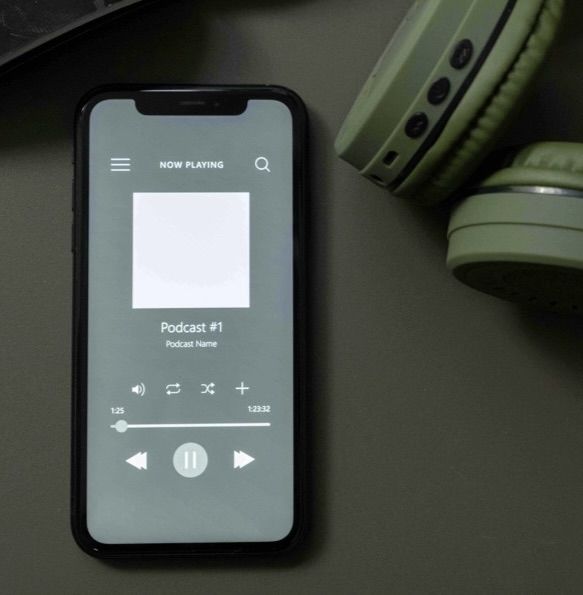A lesson on how to successfully engage in science podcasting
Karen Emslie, SciencePOD content creator
Podcasts offer on-demand listening, anytime, anywhere. Listeners around the world have embraced audio storytelling and hits, such as Serial and Stuff You Should Know, have been downloaded millions of times. Science podcasts, including The Weirdest Thing I Learned This Week and Science Vs, are among the most popular.
The numbers speak for themselves. In the UK alone, the number of weekly podcast listeners has almost doubled in five years from 3.2 million in 2013 to 5.9m in 2018. Edison Research’s 2019 report, The Podcast Consumer, reveals that 22% of Americans listen to podcasts each week, that’s 62 million people.
So, how can researchers and science innovators get in on the act?
Podcasts are popular because they are intimate and easy. While articles require us to read and videos want us to watch, podcasts ask only for our ears. That leaves listeners free to do other things, such as travel to work, exercise, clean the house, or do some gardening.
However, podcasts need to keep listeners’ attention. Bored of a topic? Just hit stop and download something else. Science has a big advantage here as it offers a bounty of surprising discoveries, facts, and engaging topics to explore. The subject matter is there, the trick is what you do with it.
Science podcasting tips: things to think about
Be clear on what your podcast is about and who your listeners are. Are you talking to the general public or fellow professionals? Try to sum up your idea in one sentence. Is it about research? policy? news? Imagine an ‘ideal listener’, perhaps a friend or colleague, that represents your target audience.
Think carefully about both storytelling and science. Look for interviewees that have scientific expertise but can also engage listeners with their words. Search online for relevant experts who have already done TED Talks, YouTube videos, or media interviews. Listen to how they tell science stories.
Some science podcasts take the form of snappy news roundups while others dive deep into classic questions. They come in an array of formats. The BBC’s Infinite Monkey Cage sees Professor Brain Cox and comedian Robin Ince explore a different topic each week, while Undark offers a more narrative, experimental format.
Ask yourself what format works for your idea. A one-off series or something more regular that runs over several seasons. Do you have enough material, time and resources to produce a weekly or monthly podcast?
Podcasts of any length can take listeners on a narrative journey with a beginning, middle and end. Short podcasts, of around three minutes, are an ideal vehicle for delivering the latest science news. Bitesize audio can cover the nuts and bolts of new research quickly and helps build a regular audience looking for a quick or easy way to be kept up to date.
Episodes of 20 minutes are also popular as they suit listeners on the move, such as commuters. However, a longer format gives more scope for exploration and creativity. The average length of a podcast is 43 minutes and 24 seconds.

Audio tips
Entry level set-ups include a smartphone or sound recorder with an external microphone, or a laptop and a USB mic. Use headphones for best results. Interviews can be recorded face-to-face or remotely via video conferencing tools or telephone but beware of quality. Take the time to test how the audio sounds and make changes if you need to. Most people don’t have access to professional, soundproofed studio but there’s a handy hack. Experienced podcasters suggest recording narration under a blanket to get the cleanest sound. Mix it up! Engage listeners by combining narration, interviews, sound effects and music. Ambient and close-up sounds from the lab or field will bring about a podcast about new research to life. Search online resources, such as Soundsnap and Freesound, for music and Special FX, and bring it all together in the edit. Popular software includes Audacity (free), Adobe Audition and Hindenburg.
Reach out and stay engaged in podcasting
You don’t have to do it all yourself. In fact, you don’t have to do any of it yourself. Many science writers and science communicators also have podcasting experience. Science content creators today are a versatile, diverse and creative group, reach out to the experts and let them help you tell your science story and share it with the world through a podcast. Finally, be an active listener. Downloading the latest science podcasts is the best way to learn about podcasting and to figure out the approach that will work for you. And, it’s enjoyable too.

